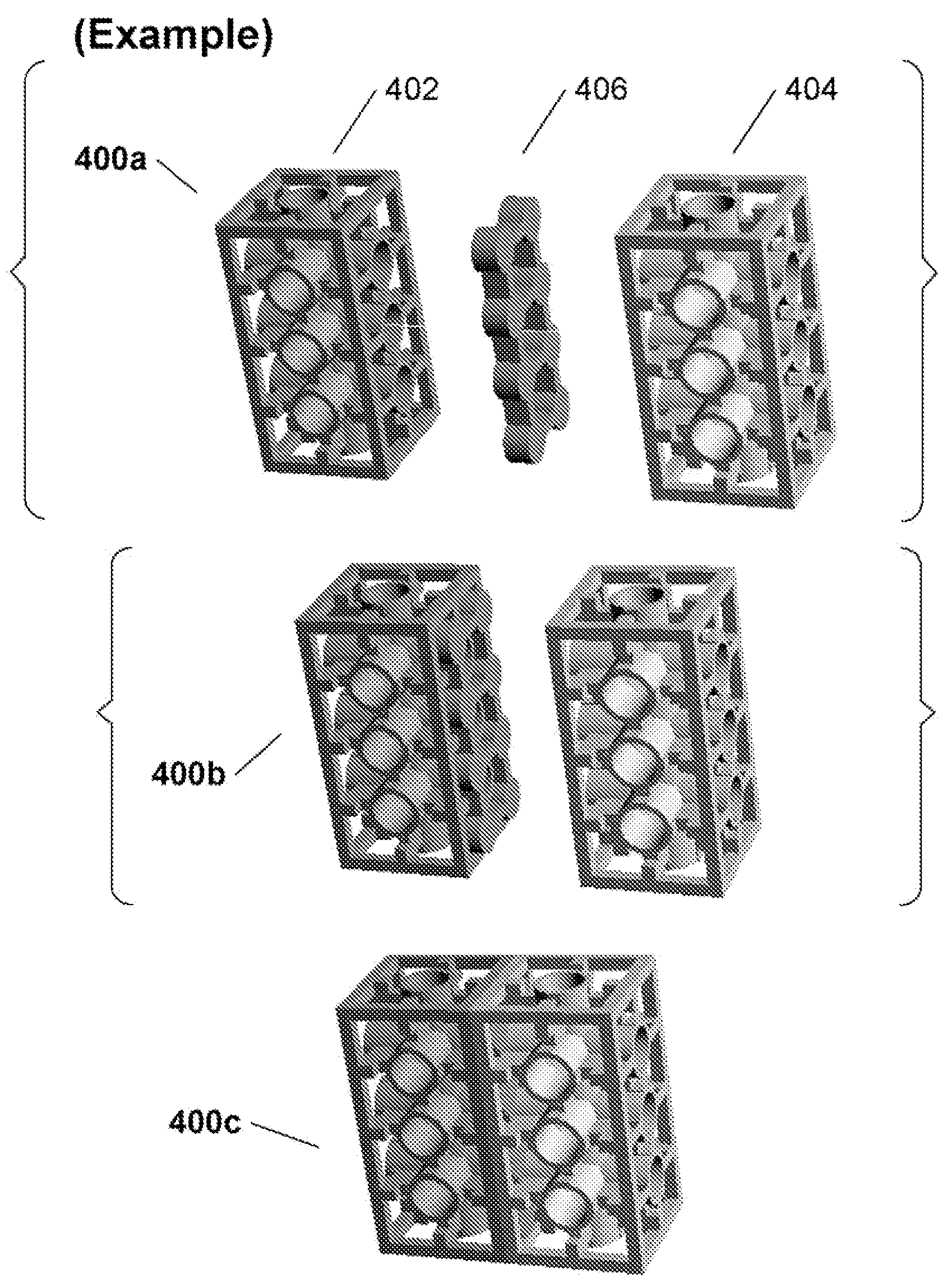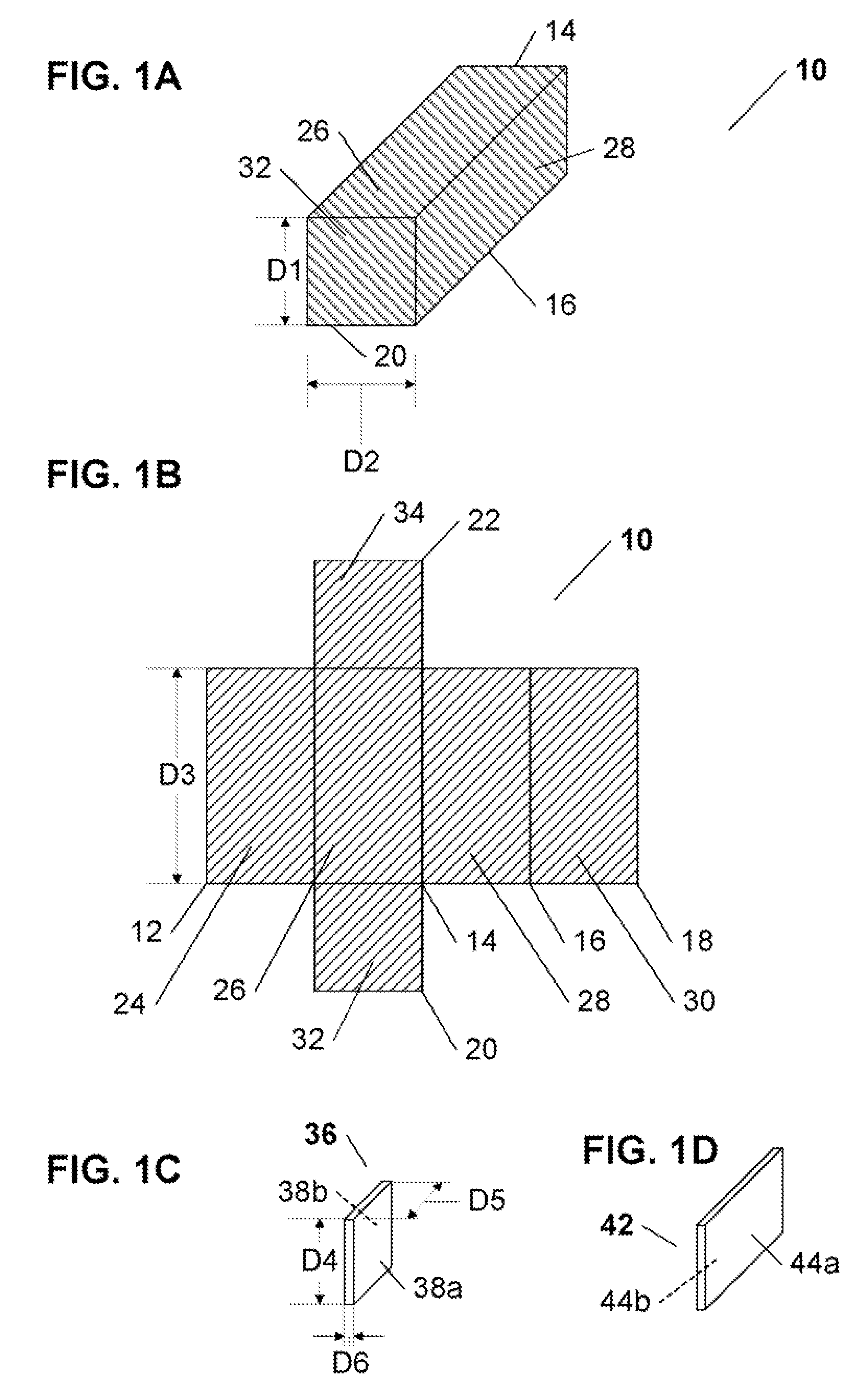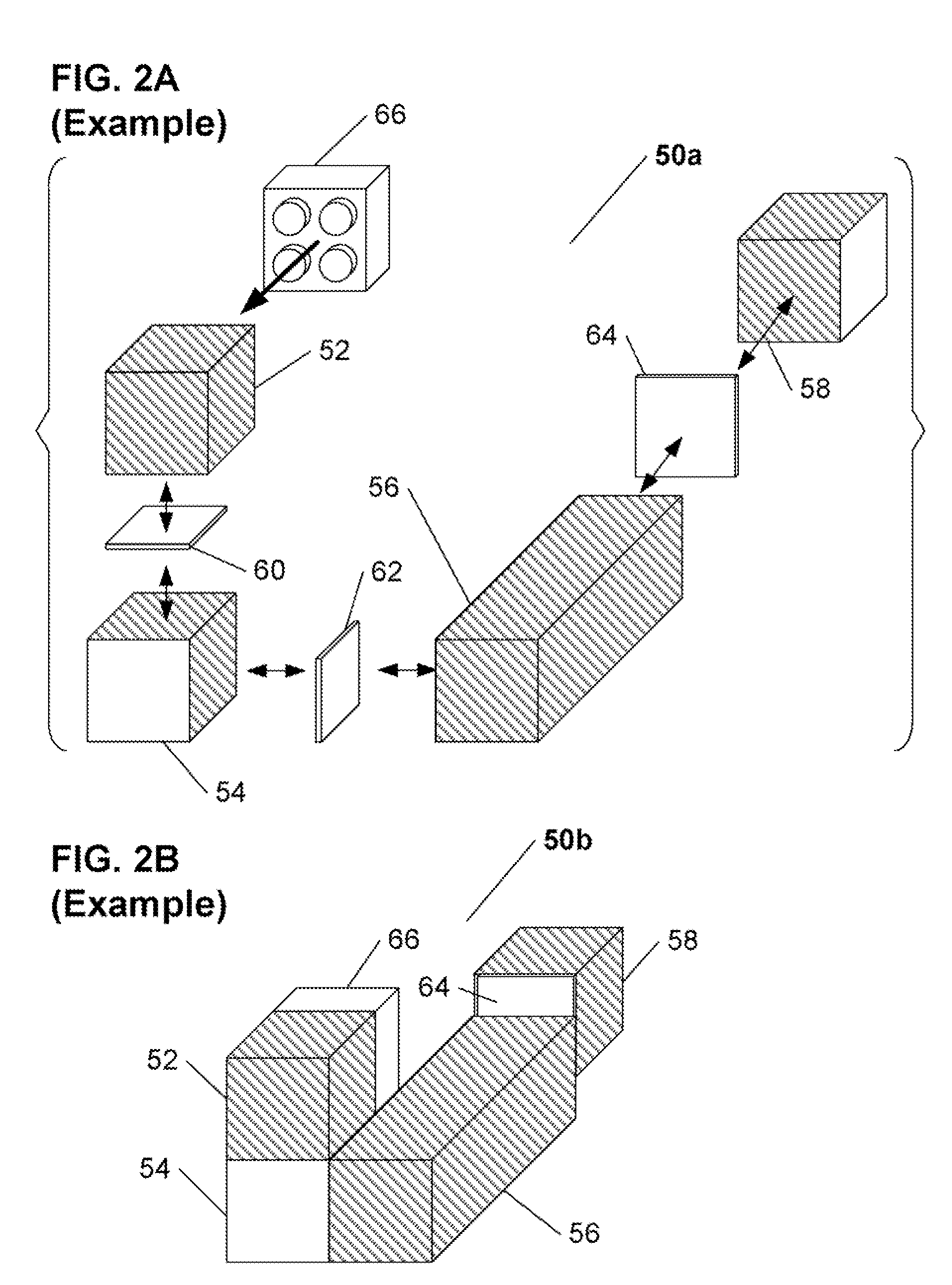Modular construction system utilizing versatile construction elements with multi-directional connective surfaces and releasable interconnect elements
a construction system and multi-directional technology, applied in the field of modular construction systems, can solve the problems of significant limitations on the way such building blocks can be releasably connected to one another, weak coupling force between smaller and significantly larger interconnected blocks, and severe inability to inspire peopl
- Summary
- Abstract
- Description
- Claims
- Application Information
AI Technical Summary
Benefits of technology
Problems solved by technology
Method used
Image
Examples
first embodiment
[0065]Referring now to FIG. 5A, various views are shown of an inventive cavity element 120, that may be utilized as part of a cavity element pattern in receiving regions of the connective surfaces of the various embodiments of the inventive construction components. The cavity element 120 comprises a first internal hollow region 126 bounded by a four corner friction elements 122a-122d, each of a dimension D8, where the hollow region 126 and the friction elements 122a-122d are sized and configured to receive therein, and releasably frictionally engage, one of the studs of an interconnect component in a coupling region 128, such as any of the studs 88a to 88d of the interconnect component 86 of FIG. 4A. The corner friction elements 122a-122d are preferably substantially quarter-cylindrical, such that when vertices of four corner elements of four different cavity elements are placed in contact with one another, together they form a cylindrical element of a diameter substantially equal t...
second embodiment
[0068]Referring now to FIG. 5B, various views are shown of an inventive cavity element 130, that may be utilized as part of a cavity element pattern, in receiving regions of the connective surfaces of the various embodiments of the inventive construction components. The cavity element 130 comprises a first internal hollow region 136 bounded by a four corner friction elements 132a-132d each of a dimension D8, where the hollow region 136 and the friction elements 132a-132d are sized and configured to receive therein, and releasably frictionally engage, one of the studs of an interconnect component, such as any of the studs 88a to 88d of the interconnect component 86 of FIG. 4A. The corner friction elements 132a-132d are preferably substantially quarter-cylindrical, such that when vertices of four corner elements of four different cavity elements are placed in contact with one another, together they form a cylindrical element of a diameter substantially equal to two times D8.
[0069]In a...
third embodiment
[0071]Referring now to FIG. 5C, various views are shown of an inventive cavity element 140, that may be utilized as part of a cavity element pattern, in receiving regions of the connective surfaces of the various embodiments of the inventive construction components. The cavity element 140 comprises a first internal hollow region 146 bounded by a four corner friction elements 142a-142d, each of a dimension D8, where the hollow region 146 and the friction elements 142a-142d are sized and configured to receive therein, and releasably frictionally engage, one of the studs of an interconnect component, such as any of the studs 88a to 88d of the interconnect component 86 of FIG. 4A. The corner friction elements 142a-142d are preferably substantially quarter-cylindrical, such that when vertices of four corner elements of four different cavity elements are placed in contact with one another, together they form a cylindrical element of a diameter substantially equal to two times D8.
[0072]In ...
PUM
 Login to View More
Login to View More Abstract
Description
Claims
Application Information
 Login to View More
Login to View More - R&D
- Intellectual Property
- Life Sciences
- Materials
- Tech Scout
- Unparalleled Data Quality
- Higher Quality Content
- 60% Fewer Hallucinations
Browse by: Latest US Patents, China's latest patents, Technical Efficacy Thesaurus, Application Domain, Technology Topic, Popular Technical Reports.
© 2025 PatSnap. All rights reserved.Legal|Privacy policy|Modern Slavery Act Transparency Statement|Sitemap|About US| Contact US: help@patsnap.com



